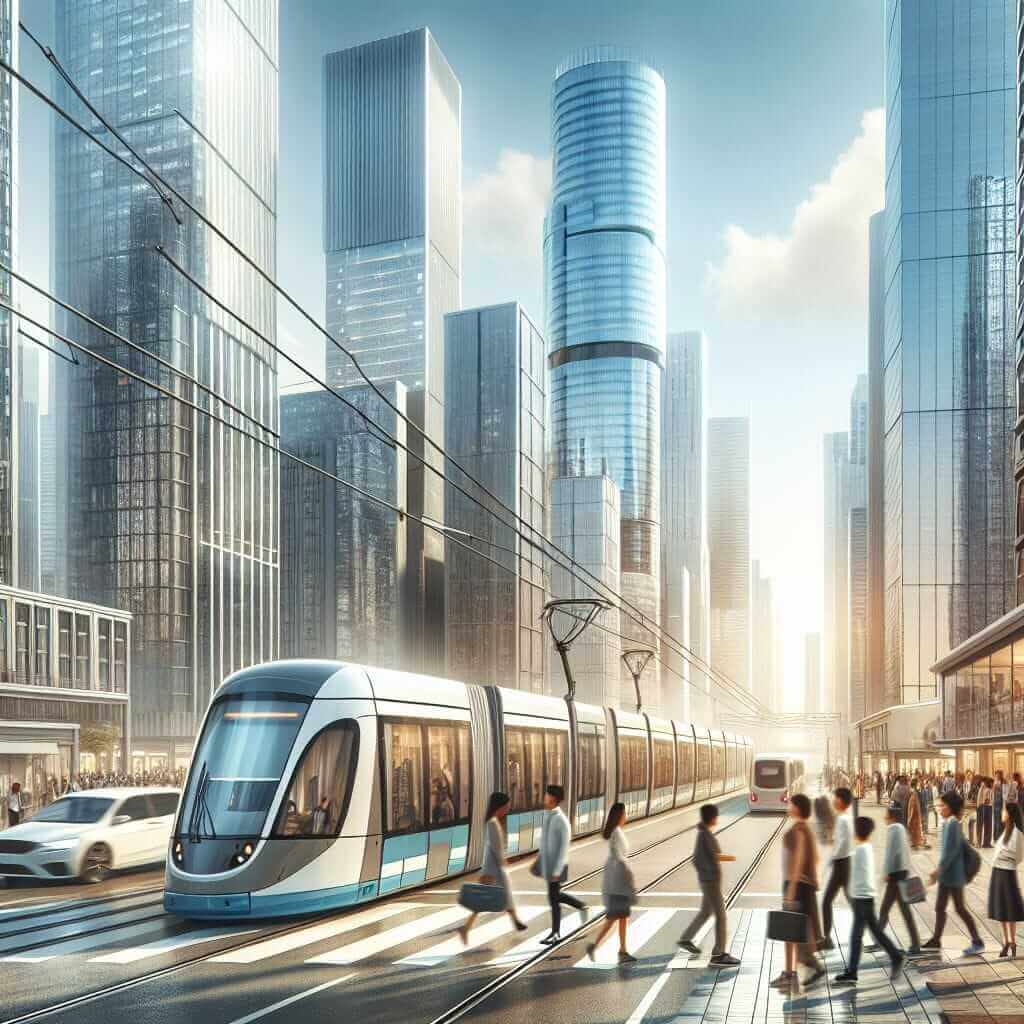“Urban mobility” and the “effects of public transportation” are common topics in IELTS Writing Task 2. These issues are increasingly relevant in our rapidly urbanizing world. This essay will explore these topics in detail, providing a sample answer, vocabulary analysis, and writing tips to help you achieve a band 8 score on your IELTS exam.
Sample IELTS Writing Task 2 Questions
Here are some potential IELTS Writing Task 2 questions related to public transportation and urban mobility:
- Some people believe that investing in public transportation is the best way to improve urban mobility, while others argue for different solutions. Discuss both views and give your own opinion.
- The increasing popularity of private vehicles is a major contributor to traffic congestion in cities. To what extent do you agree or disagree with this statement? Discuss the effects and suggest solutions.
- With growing concerns about environmental pollution and traffic congestion, many advocate for greater reliance on public transportation. What are the advantages and disadvantages of this approach?
Sample Essay Analysis
Let’s analyze the first question:
“Some people believe that investing in public transportation is the best way to improve urban mobility, while others argue for different solutions. Discuss both views and give your own opinion.”
Essay Analysis
This question requires a balanced discussion. You need to present both sides of the argument – investing in public transport versus alternative solutions – before giving your opinion.
Sample Essay
Investing in public transportation is often cited as the optimal solution to enhance urban mobility. However, this viewpoint is not universally accepted, as other potential remedies exist. This essay will delve into both perspectives before presenting my own viewpoint.
Proponents of public transportation argue that it offers a multifaceted solution to urban mobility challenges. Firstly, well-developed public transport networks, such as subways, trams, and buses, can significantly alleviate traffic congestion. By providing an efficient alternative to private vehicles, public transport reduces the number of cars on the road, leading to smoother traffic flow and shorter commute times. Secondly, public transport is generally more environmentally friendly than private vehicles. Buses and trains, especially electric ones, emit fewer greenhouse gases per passenger, contributing to improved air quality and a reduced carbon footprint.

Conversely, others contend that relying solely on public transportation is insufficient and that alternative solutions are essential. They argue that public transport often lacks flexibility and convenience, particularly for individuals residing in areas with limited access to public transport routes. Furthermore, investing in public transport infrastructure can be expensive and time-consuming, potentially diverting resources from other crucial areas such as healthcare or education. As a result, they propose solutions like promoting cycling infrastructure, implementing congestion pricing for private vehicles during peak hours, and encouraging carpooling to alleviate traffic and enhance urban mobility.
In my opinion, while alternative solutions have their merits, investing in public transportation remains the most effective long-term strategy for improving urban mobility. It offers a sustainable and environmentally friendly mode of transportation that can cater to a large population. However, to maximize its effectiveness, governments should focus on creating integrated, accessible, and reliable public transport systems while simultaneously exploring and incorporating alternative solutions to complement these efforts.
Word count: 322 words
Vocabulary Highlights
- Alleviate: (verb) /əˈliːvieɪt/ – to make something less severe, serious, or painful
- Multifaceted: (adjective) /ˌmʌltiˈfæsɪtɪd/ – having many different aspects or features
- Proponent: (noun) /prəˈpoʊnənt/ – a person who advocates a theory, proposal, or course of action
- Congestion pricing: (noun) /kənˈdʒɛstʃən ˈpraɪsɪŋ/ – a system of charging motorists for using a specific road or area during peak hours to reduce traffic congestion
- Divert: (verb) /daɪˈvɜːrt/ – to cause something or someone to change direction or follow a different route
- Infrastructure: (noun) /ˈɪnfrəˌstrʌktʃər/ – the basic physical and organizational structures and facilities (e.g., buildings, roads, power supplies) needed for the operation of a society or enterprise
- Sustainable: (adjective) /səˈsteɪnəbl/ – able to be maintained at a certain rate or level without depleting resources or causing harm to the environment
- Complement: (verb) /ˈkɑːmplɪment/ – to add to something else in a way that enhances or improves it
Conclusion
The effects of public transportation on urban mobility are complex and multifaceted. By understanding the nuances of the arguments and using precise vocabulary, you can write a compelling and well-structured essay. Remember to practice regularly, analyze your mistakes, and familiarize yourself with various topics to excel in your IELTS Writing Task 2.